
Talk
Webinar: Shift Left in SaMD Development
In an iterative world, the fastest learner is the one who wins. Big Tech companies have mastered the art of moving fast and breaking things in order to quickly learn from mistakes. Medical device companies have a duty to our patients. If we move fast and break things, we’re endangering people’s lives – and if what we’re breaking is a connected medical device, we run the risk of endangering lives at scale.
Since it’s in everyone’s best interest to have medical devices get to market sooner to help patients, some MedTech companies have innovated and developed ways to “move faster and break nothing.” In other words, they have learned to accelerate their device development processes along with continuing to innovate and iterate their products while keeping patients’ data and lives at the forefront.
At a webinar on November 11th, 2021, an all-star lineup of industry leaders and pioneers from some of the leading names in MedTech (Eli Lilly, Tandem Diabetes Care, Zimmer Biomet and egnite Health) joined Orthogonal’s own Bernhard Kappe and Randy Horton, along with Michael Iglesias from Roche, to discuss the different approaches they have taken to accelerating software development in our space today.
Orthogonal organized the speakers based around two topics – software development and AI development. The first speakers in each topic gave a high-level overview, while the second speakers detailed a specific case study within that topic. Randy introduced the webinar; you can watch the video here and read the transcript here.
The following is a high-level summary of the points made during each segment of the webinar. If you want to learn more, we also have included links to the full slides, transcript and video from each segment of the talk. You can also watch the full video here:
For other events in this series, check out our Move Faster and Break Nothing Webinar Series.
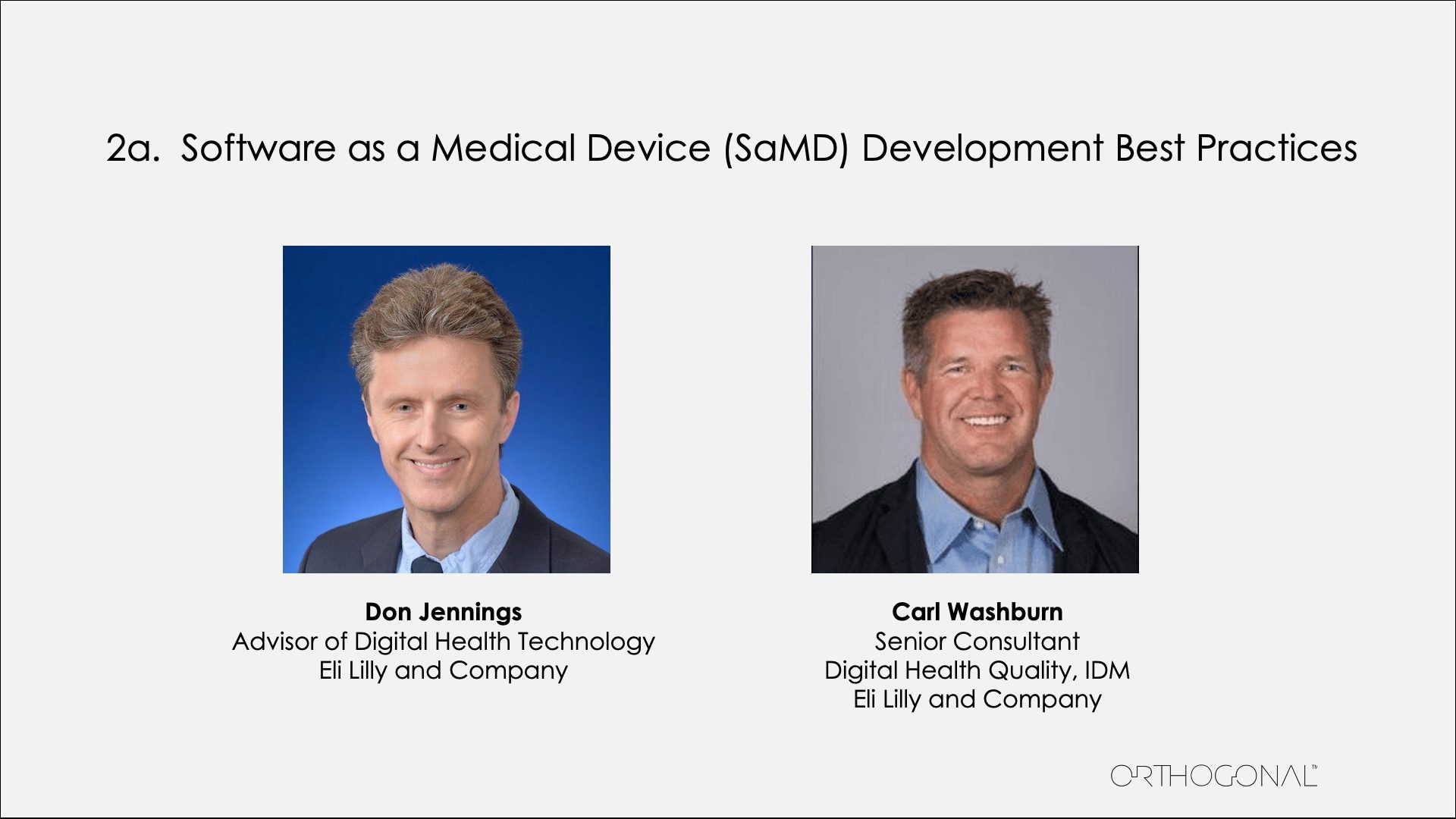
Don Jennings and Carl Washburn from Eli Lilly presented five proven best practices for the development of Software as a Medical Device (SaMD):
The best practice for a system of systems is creating a top-down methodology that can assess the greatest areas of risk among the third-party packages used to create the system. Developers can then spend their risk analysis bandwidth on the most challenging issues first.
The best practice for risk management for a system of systems is characterizing the risk of each individual system. This ensures that every system is interoperable with every other system that you’re combing to create the end product.
The best place to adopt Agile for the development of SaMD is in the design controls phase, accomplished by moving user stories into sprints to act as approval for software requirements. This allows developers to work against approved requirements in an Agile sprint format.
The best practice for managing the inputs of a wide swath of stakeholders, such as in the content and UI verification stage, is to create a formal governance committee that standardizes the review and approval process. This gave all of the stakeholders an equal place at the table and got them working through approvals more efficiently.
Thinking outside of the box is the best practice when it comes to applying physical medical device development steps to SaMD development. Technical validation is where a physical medical device is brought to its literal breaking point, but a SaMD cannot be dropped, baked or frozen to test its durability in the same way. The development teams at Lilly created a template of common causes of software failures that acted as the technical validation of the software product.
Watch the video of Don and Carl’s presentation here, and read the full transcript of their talk here.

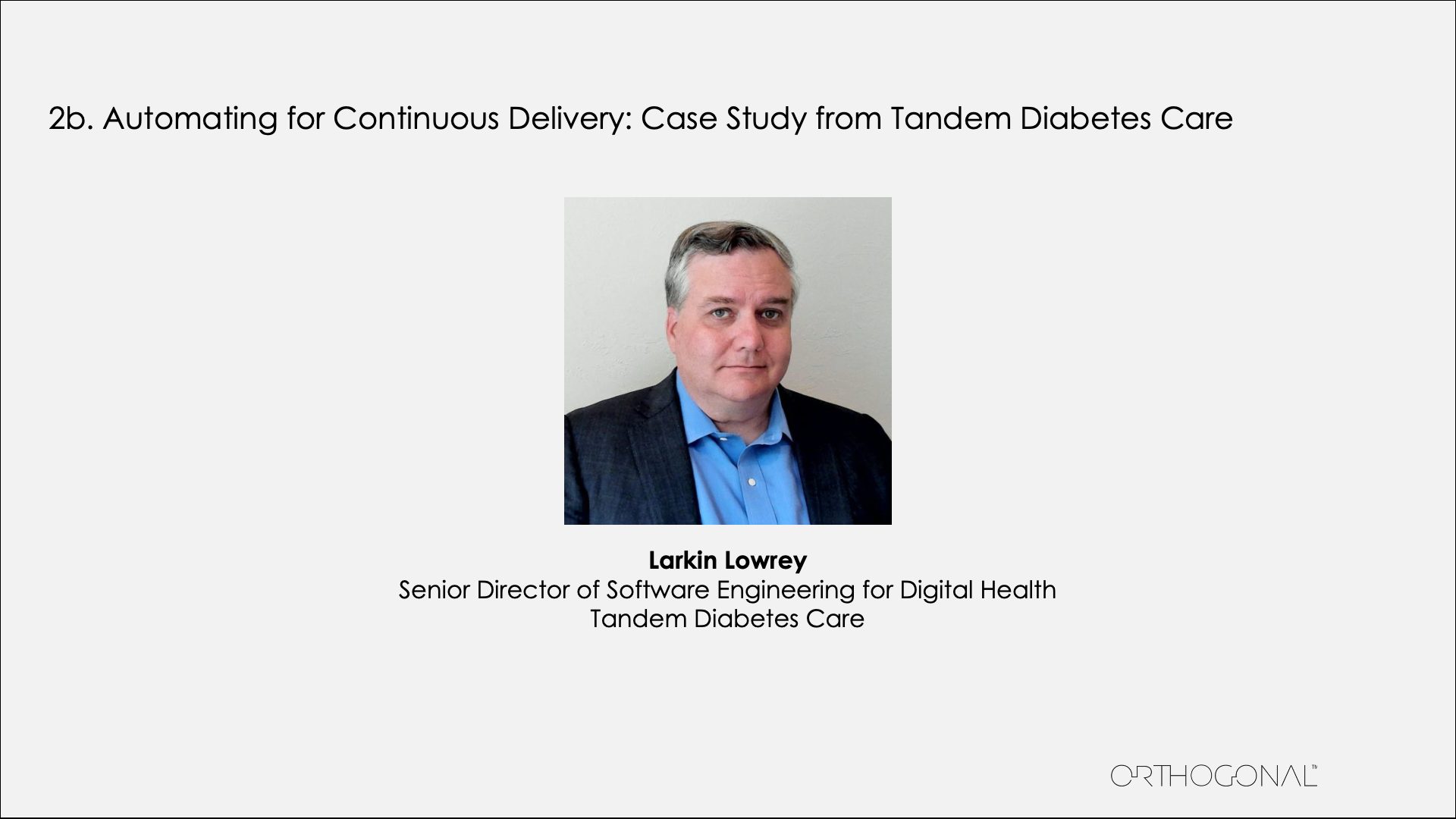
Larkin Lowrey from Tandem Diabetes Care demonstrated Gherkin, a programming language that seamlessly derives testing automation from software requirements. From one requirements document written in Gherkin, Larkin generated product requirement specifications (PRS) and software requirements specifications (SRS), as well as software validation protocols (SVAPs) and requirements traceability matrix (RTM) for both automated and manual testing. This greatly speeds up the process for their test engineers, dramatically reduces their workload and allows Tandem to validate their work multiple times a day.
Gherkin-written requirements documents act as a source of proof, a gate to pull requests and deployment and can cut down on the risks associated with manual tests. Because they are stored in the same Git repository as the source code, changes to requirements can be compared over time. And as testing engineers automate the still-manual tests and update the Gherkin document, the amount of time saved by automated testing increases.
“It’s incredibly liberating,” said Larkin. “It enables a tremendous amount of productivity. I can’t undersell the value of having the ability to rerun V&V multiple times a day with very little effort.”
Watch the video of Larkin’s presentation here, and read the full transcript of his talk here.
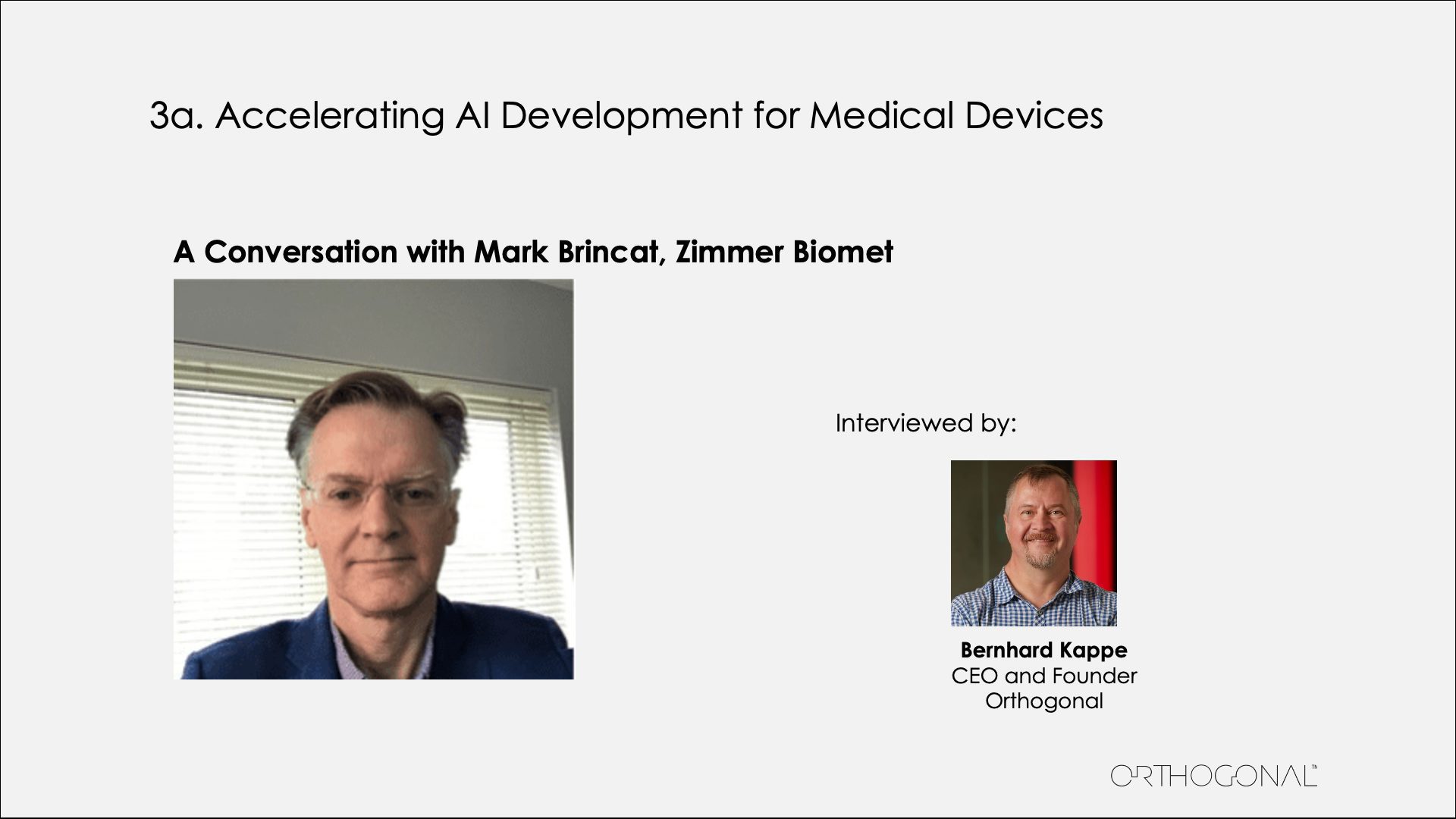
Bernhard Kappe from Orthogonal interviewed Mark Brincat, who leads AI and advanced analytics at Zimmer Biomet. Two of the questions Mark was asked, and his answers, are summarized below.
Mark: As long as we’ve been developing software for healthcare, there have been algorithms… Recently, medical software developers have hit upon the issue of scalability and the growing complexity of interacting with patients. AI allows us to be more proactive and better personalize our users’ experiences.
Currently, we’re seeing how medical device and MedTech firms are better utilizing data, embracing new technologies and incorporating them into their platform. Firms that take a data-centric approach are leading the pack. They are developing environments that can build good data and AI products, starting from engineering and moving all the way through to deployment on the market and maintenance of the product.
Mark: It’s when a company collects data not just for the sake of collecting it, but to use that data to systematically develop insights and drive value back into their products and services. At Zimmer Biomet, we’ve spent the last five years heavily investing in building out our robotics, device applications and a whole series of products that support patients and clinicians across the whole continuum of healthcare.
Watch the full video of the interview here, and read the full transcript of the interview here.
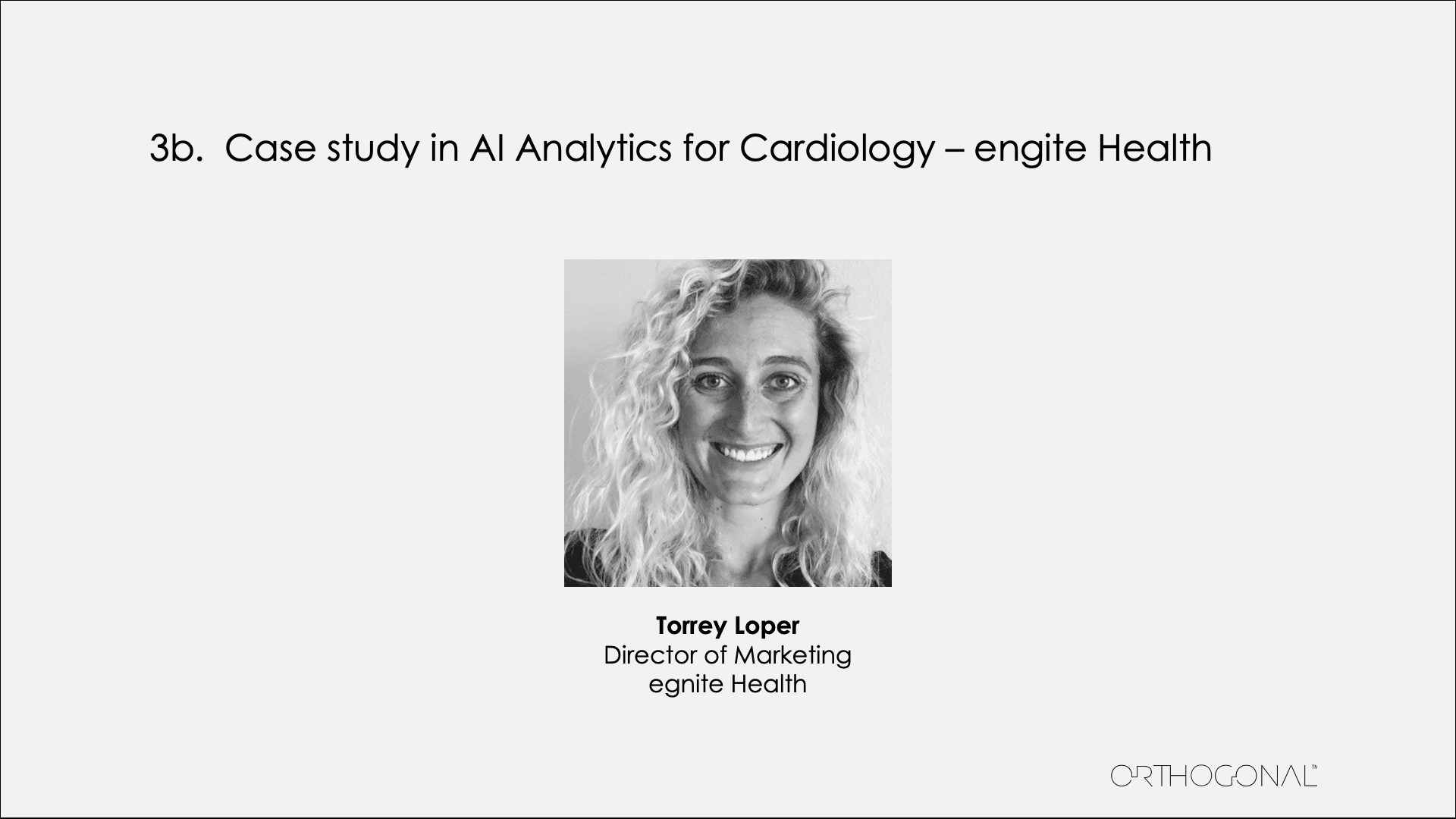
Torrey Loper from egnite Health discussed her company’s flagship product, CardioCare, a Clinical Decision Support Software working to reduce mortality for patients suffering from Structural Heart Disease.
CardioCare is a program that uses Artificial Intelligence to detect patients who are at risk of falling out of the healthcare system. CaradioCare identifies patients with and at risk of developing a form of Structural Heart Disease. This condition has a robust treatment plan when diagnosed properly. Unfortunately, not only is the mortality rate for untreated patients very high, but detecting it is also quite difficult. A patient may be suffering from Structural Heart Disease and not know until it’s too late.
egnite Health has placed CardioCare in over 50 hospitals across the U.S. By analyzing clinical patient data alongside a database of 1.2 million echocardiograms, CardioCare can identify both national trends and individual hospital statistics. It identifies which patients have cardiovascular disease and prioritizes care for those who are eligible for life-saving treatment. With its predictive algorithms, it can pick out at-risk patients that need a follow-up with a doctor. Torey credits the success of CardioCare’s adoption to clinical evidence and thought leadership.
Watch the video of Torrey’s presentation here, and read the full transcript of her talk here.

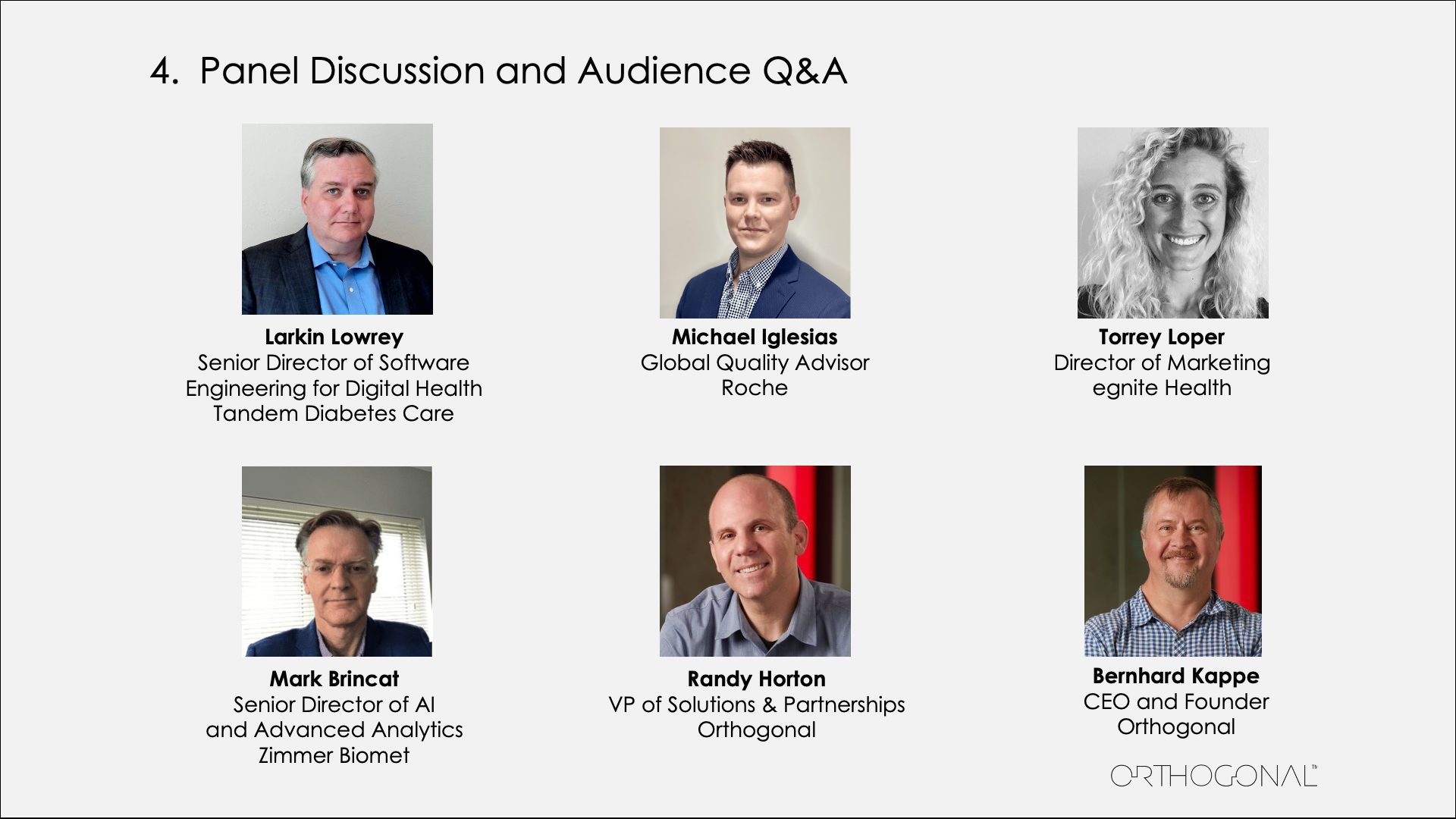
The webinar wrapped up with an audience Q&A facilitated by Roche’s Michael Iglesias.
Michael offered his thoughts on how to shift an organizational mindset to Agile methodology while keeping delivery on time. He noted that while Agile can speed up the development to market pipeline, there are times when development teams get on board with Agile but are dismayed at the amount of documentation and review they need to do. His recommendation, echoed by the other presenters, was to focus on development in short increments. Adopting incremental development makes the process easier on developers, and allows the broader product team to assess if the right product is being built along the way.
Watch the Q&A video here, and read the full Q&A transcript here.
Sign up for email notifications about upcoming webinars that will help your organization move faster and break nothing with Agile SaMD development.
Related Posts

Talk
Webinar: Shift Left in SaMD Development

Talk
What Medical Device Software to Develop Under QMS: Webinar Summary

Talk
Sizing up SaMD Projects for Success: Webinar

Talk
3 Tools You Need for SaMD App Development: Webinar